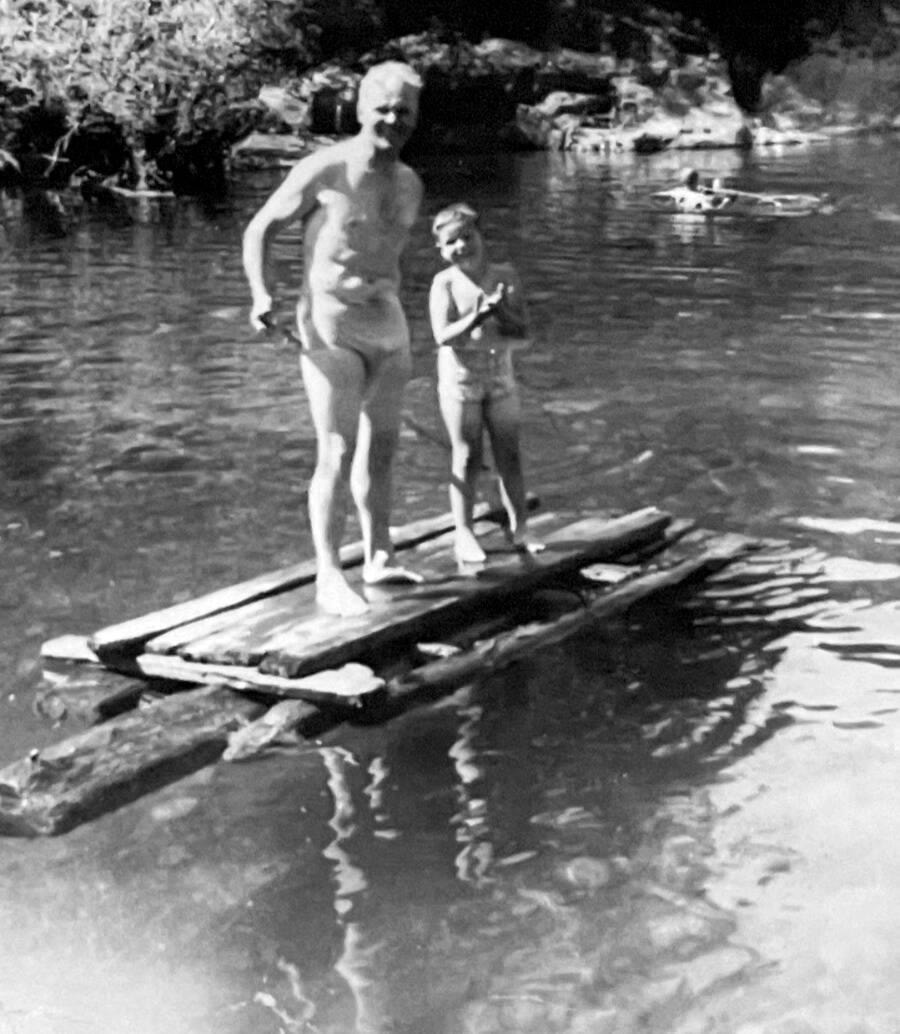Elida Peers | Contributed
Since the late 19th century, the series of intricately shaped potholes and tunnels within the rock of the riverbed in the upper reaches of the Sooke River have attracted attention.
While we understand that initially, the area was described as the Devil’s Potholes, widespread usage through many decades led to the term the Sooke Potholes. This expression continues to be used by visitors today as they seek our attractions.
While tremendously popular with Sooke folk, who gather to luxuriate in the picturesque pools below the falls, out-of-towners also began to come.
MORE HISTORY: Museum staff discovers Sooke’s hidden trophy
It was in 1950 that the Potholes attracted this officer of the Royal Canadian Navy, then based in Esquimalt. The officer pictured Joseph Paul, on a raft in the river with his first child, went on to a distinguished career in the navy.
Growing up in Alberta, he had determined, at 16, that he wanted to see the ocean and join the navy. Meeting the criteria to become a Boy Seaman, he joined in 1933. His memory of his indoctrination in this role was gruelling, starting with rowing at 5 a.m. His dedication brought him to the rank of chief petty officer, and when the Second World War broke out, he was sent to Britain for further training.
During the war, he served in the Battle of the Atlantic on convoy service in a war theatre fraught with arduous challenges. Remaining in the navy as a career seaman, he next was in the Korean War aboard HMCS Haida. In this period, while based in Esquimalt, he enjoyed the time out with his family at the Sooke Potholes.
Advanced commands in eastern Canada followed. Capt. Joseph Paul served as commanding officer of HMCS Penetang, HMCS Outremont, and HMCS Bonaventure. Then he became commanding officer for CFB Shearwater, CFB Cornwallis, and CFB Stadacona, retiring after 38 years in 1971.
The captain’s time here must have left a subconscious impression as his grandson Trevor, whose dad had been born during the captain’s service at Esquimalt, decided to make Sooke his home.
Trevor Paul is one of the founding members of the Sooke Parks Society. He is currently enjoying contributing his time to assist with our local parks. Trevor once heard the expression of “having Sooke in the guts” and said, “That’s how I feel now that I know my grandparents swam here “I got Sooke in the guts!”
•••
Elida Peers is the historian of the Sooke Region Museum. Email historian@sookeregionmuseum.com.
